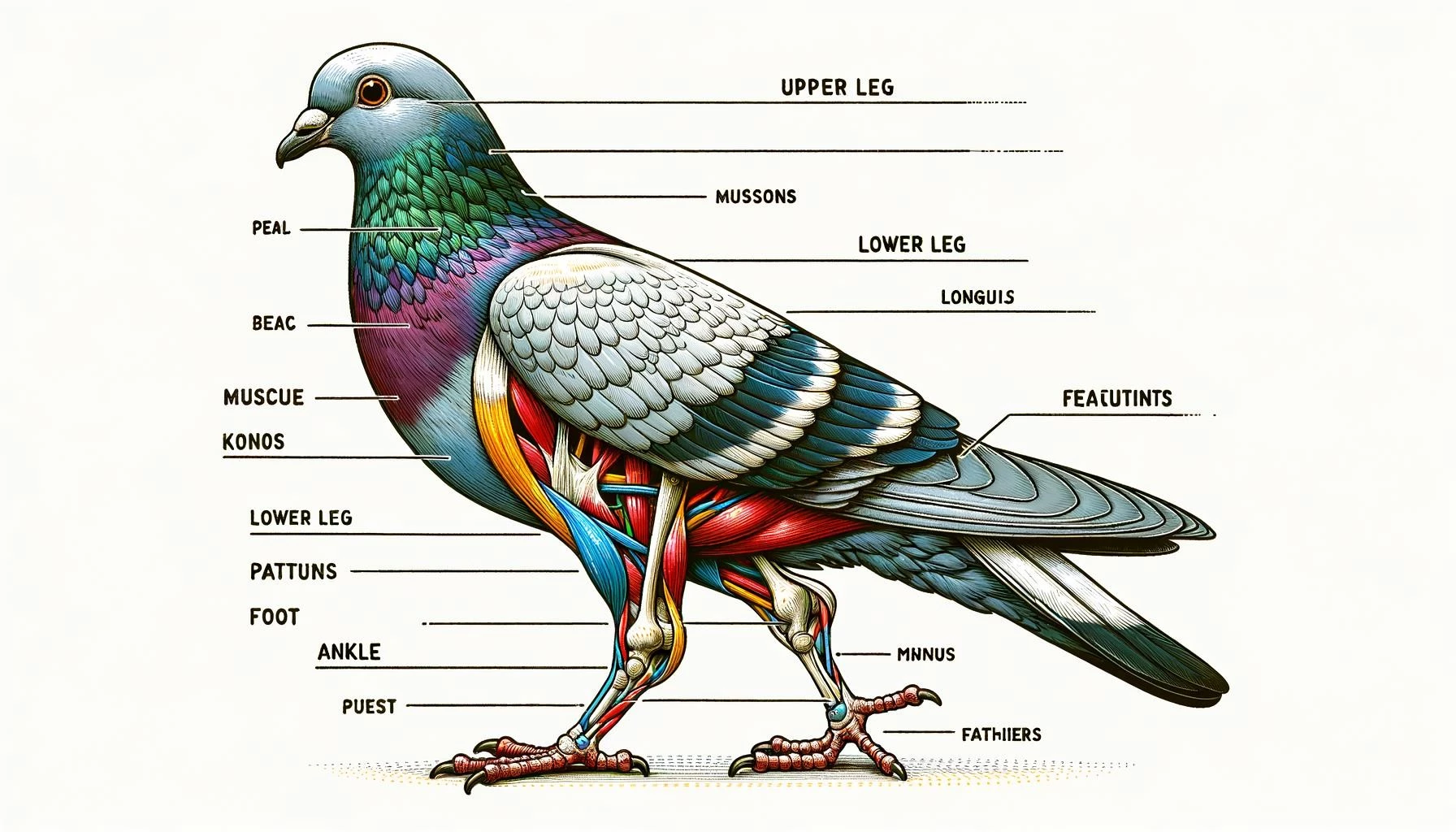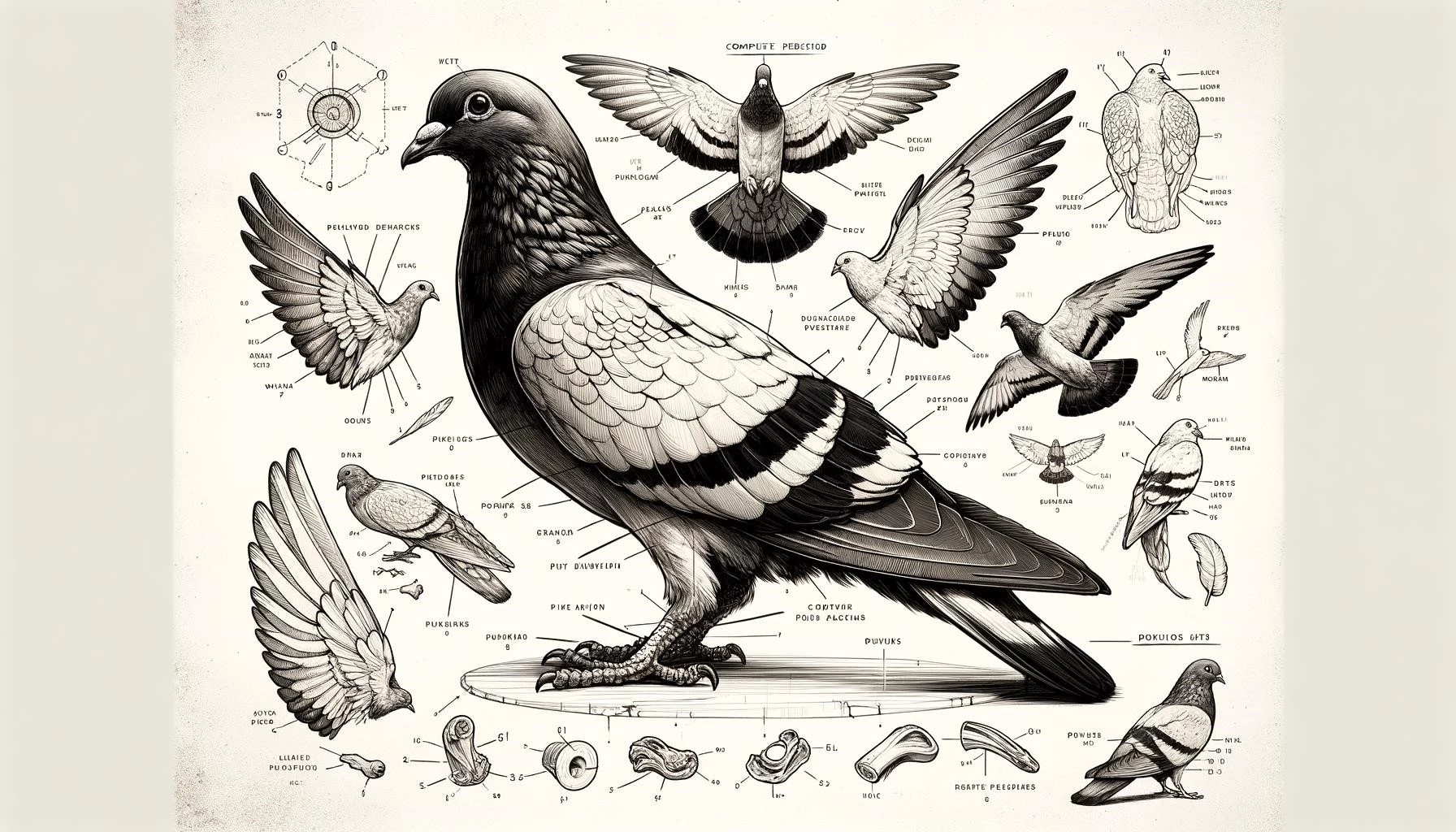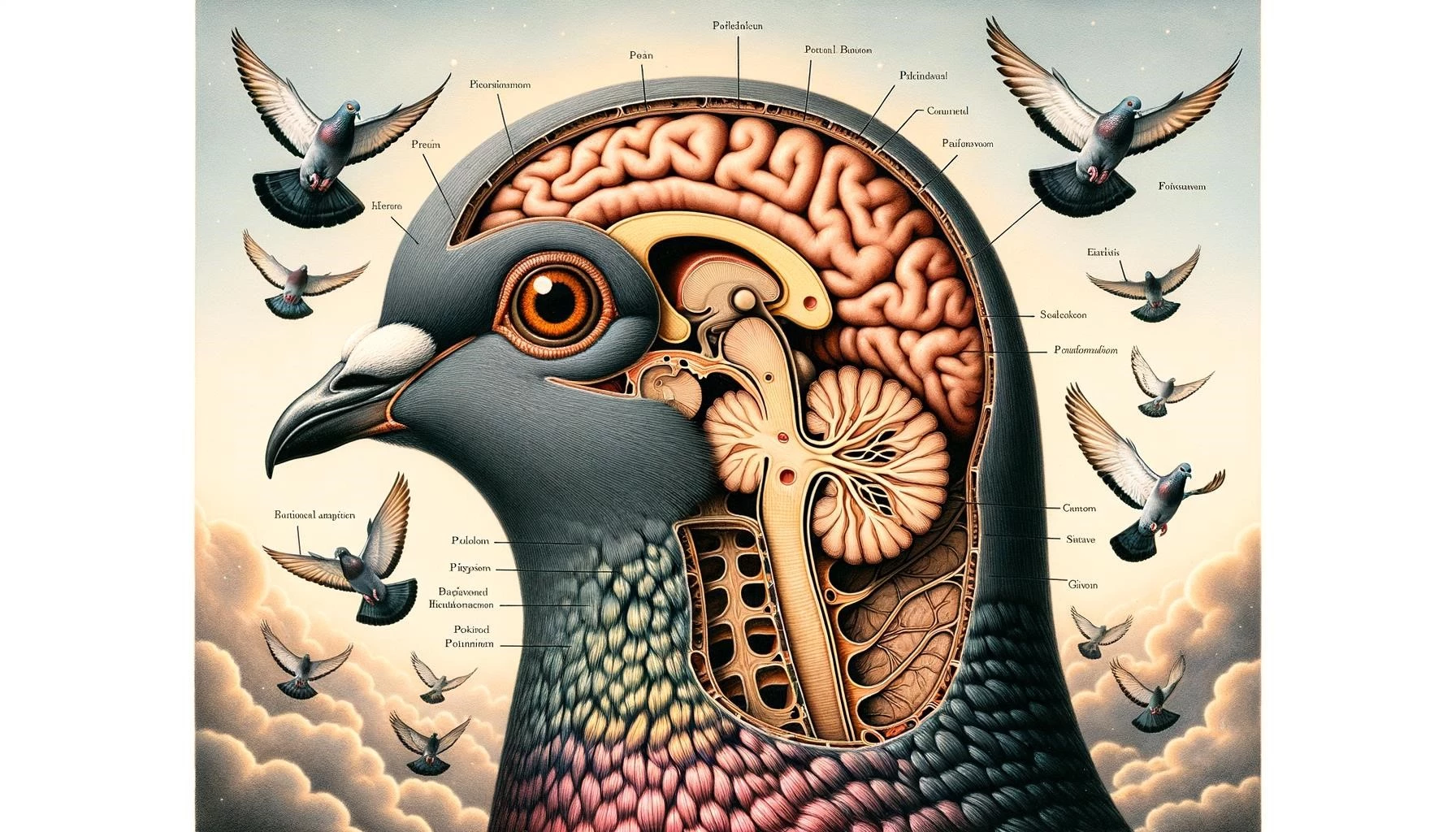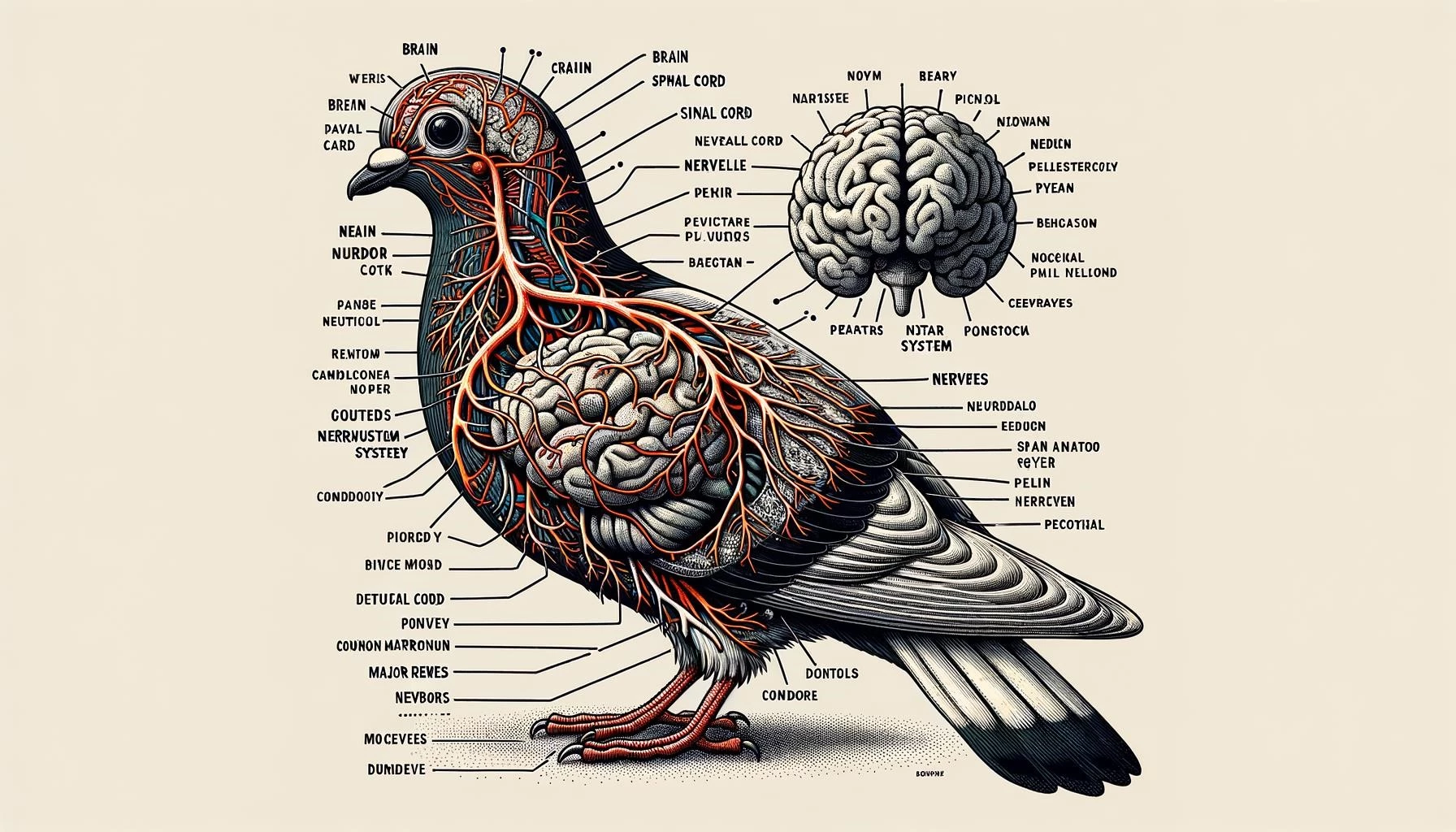Pigeons, like other birds, have a unique leg anatomy that allows them to walk, perch, and fly. Understanding the leg anatomy of pigeons can provide valuable insight into their movement, behavior, and adaptation to their environment. In this article, we will explore the key aspects of pigeon leg anatomy, including their bones, joints, and muscles.
Key Takeaways
- Pigeons have a modified leg structure in which what appears to be a backwards bent knee is actually their ankle or heel.
- The main bones in a pigeon’s leg are the femur, tibiotarsus, and tarsometatarsus, which make up the thigh, shank, and foot respectively.
- Pigeons have specialized muscles in their legs that allow them to walk, perch, and take off for flight.
Bone Structure
Pigeons, like all birds, have lightweight but strong bones to support their flight. The main bones in a pigeon’s leg include the femur, tibiotarsus, and tarsometatarsus.
The femur is the uppermost bone in the leg and is connected to the bird’s body at the hip joint. It is the longest bone in the leg and provides support and leverage for the bird’s movements.
The tibiotarsus is the large bone between the femur and the tarsometatarsus. It is equivalent to the tibia in mammals. The tibiotarsus is the fusion of the proximal part of the tarsus with the tibia, which gives the appearance of a ″backwards bent knee″ in birds.
The tarsometatarsus is the lowermost bone in the leg and forms the foot of the pigeon. It is actually a fusion of the distal part of the tarsus with the metatarsals, which gives the bird’s leg structure and stability.
Joints
Pigeons have various joints in their legs that allow for flexibility and movement. The main joints in a pigeon’s leg include the hip joint, knee joint (between the femur and tibiotarsus), and ankle joint (between the tibiotarsus and tarsometatarsus).
The hip joint allows the leg to move in various directions, enabling the pigeon to walk, hop, and fly. The knee joint, or the fusion of the tibia and tarsus, provides stability and support for the leg. The ankle joint, between the tarsometatarsus and other foot bones, allows for movement and balance during perching and takeoff.
Muscles
Pigeons have specialized muscles in their legs that enable them to perform various movements, including walking, perching, and flying.
The muscles in a pigeon’s leg can be divided into three main groups: the muscles of the thigh, muscles of the shank or lower leg, and muscles of the foot. These muscles work together to provide the necessary power and coordination for the pigeon’s leg movements.
The muscles of the thigh, such as the femoropterigial muscle, are responsible for flexion and extension of the leg. The muscles of the shank, such as the gastrocnemius and soleus, provide strength for walking and perching. The muscles of the foot, including the flexor and extensor muscles, control the movements of the toes and enable gripping and perching.
Overall, the leg anatomy of a pigeon is highly specialized and adapted for its unique lifestyle, allowing these birds to walk, perch, and take flight with ease.









